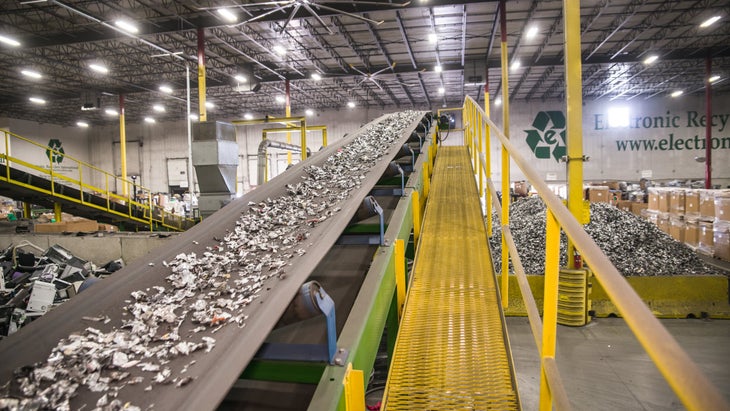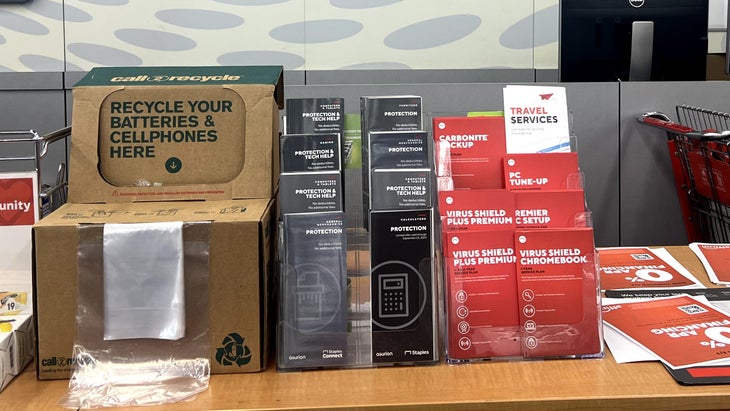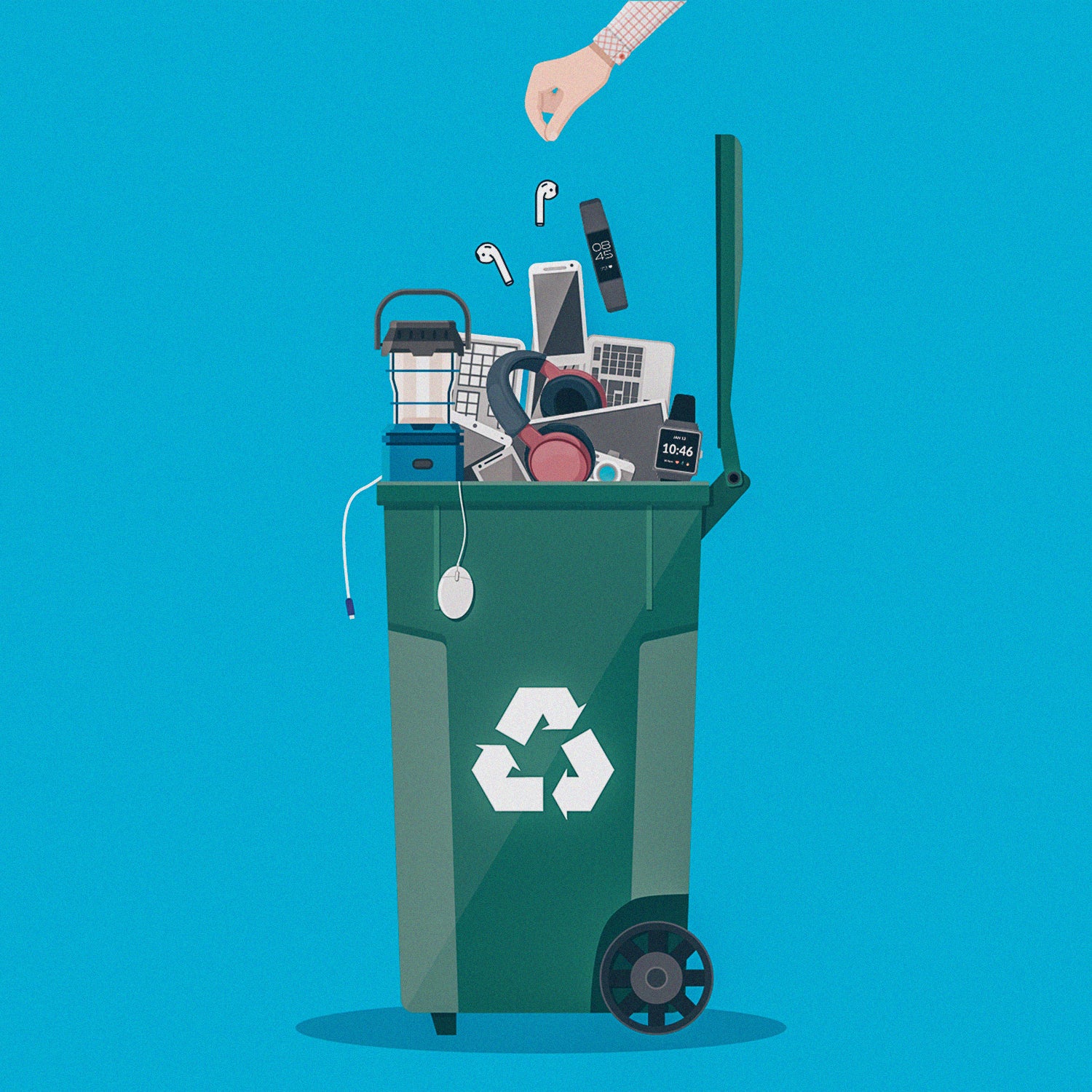In the corner of my basement sits a dusty Rubbermaid bin crammed with a decade’s worth of outdated and obsolete electronics, otherwise known as e-waste. It’s a tangle of cords, cables, clickers, cameras, camcorders, components, as well as graveyard of outdoor gear. There are wonky headlamps and dead camping lanterns, an old avalanche beacon and outdated GPS, some walkie talkies, and a couple of digital pocket cameras.
You probably have a similar bin. We know in our guts that this stuff doesn’t belong in the landfillI so we hoard it because a) we don’t know what to do with it, and b) it was expensive and maybe we’ll need that random cord someday.
E-waste has become an enormous problem for our planet. It’s the fastest growing waste stream in the world, even larger than plastic, yet only 12 percent of it currently gets recycled. This unfortunate fact has huge ramifications for the environment, and for people living near areas where the items get dumped, says Justin Stockdale, director of zero waste hauling at , a nonprofit recycling center in Boulder, Colorado.
“Hidden inside all the random cords and contraptions are valuable and finite resources like lithium, copper, gold, silver, lead, and palladium,” Stockdale says. “When these materials are disposed of improperly—which they often are, in disadvantaged communities—it can be a disaster for the soil and groundwater and the health of the people nearby, particularly children.”
Because e-waste contains so much valuable material, a shady form of “recycling” has emerged. Companies pose as recyclers, luring consumers to donate their electronics, which are then packaged and shipped to developing countries. Basel Action Network, a nonprofit that champions global environmental health and justice, calls it “,” and explains why on its website. “As a result of this massive, global flow of e-waste, former farming villages in countries like Vietnam, China, and Nigeria are now e-waste dumps. In these impoverished communities, recycling” often means burning circuit boards, soaking microchips in acid, and burning plastics to sort them by order. In short, it means poisoning people and the planet.”
The good news: proper recycling of any and all consumer electronics is free and simple, as long as you know where to take them.
Before You Recycle E-Waste, Ask Yourself This
Is there still life left in that item? Does it still work, just not as well as you’d like? Does it just need a minor repair? If the answer is yes to any of these questions, your goal should be to find someone who will keep using it until it’s end of life. You could donate it to a local charity, resell it, or for outdoor specific items, send it to �����ԹϺ���’s program. Just print out a free shipping label and send it off to our repair partner, Gear Fix, which will make needed minor repairs and resell it. We donate 100 percent of the proceeds to charity.
E-Waste Recycling Near You
Some communities have excellent local options (like Eco-Cycle in Boulder). The key is to look for a recycler that’s This designation ensures that the valuable materials, like gold, silver, copper, lithium, aluminum, and palladium, as well as toxic materials like lead, mercury, and cadmium are extracted and put back into the marketplace.
Electronics Recyclers International (ERI) is the largest e-Stewards recycler in the U.S. The company processes 100,000 tons of e-waste each year.
Thanks to ERI’s partnership with two of America’s mega retailers, recycling our e-waste responsibly is as simple as a drive to the nearest or . Both chains accept virtually any consumer electronics at no cost. This collected e-waste gets shipped off to one of ERI’s eight facilities around the country, where the recycling process begins.

“Our first step when we receive materials is to sort out the items that may contain private data and immediately destroy it,” says John Shegerian, chairman and CEO of ERI. “After sanitization, items are sorted to determine if there is still a useful life for a device through repair or re-use methods. This amounts to 2.3 to 3 million devices per year that we’re able to put back into use.”
For items that can’t be repurposed, ERI removes all batteries, which are recycled separately. “We’re left with what we call the electronic carcass which includes all the plastic, metals, glass, and precious metals,” says Shegerian. This material goes into a series of proprietary e-waste shredders (check out the video below), which turn it into what looks like coarse gray flakes flecked with colored bits, but is actually a valuable commodity.
Once shredded, the material flows into a complex sorting apparatus that uses robots, artificial intelligence, magnets, and ocular technology to divide it into various and specific reusable commodities, which then get sold to smelters and manufacturers who put them back into the circular economy.
“Ninety-eight percent of the material we receive gets repurposed,” says Shegerian. “Less than two percent is waste and is diverted to landfills.”
How to Recycle Batteries
Never throw a battery in your trash or a single-stream recycle bin. “It will eventually lead to groundwater contamination,” Stockdale says.
Although Shegerian says that ERI they can handle any batteries—single-use alkaline or lithium—that remain in any devices that make it to them, some retailers (like Staples, currently) ask that you remove them before recycling. So, what should you do with your used batteries? Call2Recycle is an e-Stewards certified battery recycler with more than . Alkaline and lithium are often different waste streams, so before you drop your batteries in a bin, check the signage to make sure you’ve got the right one.

The bottom line, says Shegerian, is that there’s no reason any electronics should go to the landfill. “Everyone in the country has access to a Staples or Best Buy. Get your e-waste there, and we’ll take care of the rest.”
Doing right by the planet can make you happier, healthier, and—yes—wealthier. �����ԹϺ���’s head of sustainability, Kristin Hostetter, explores small lifestyle tweaks that can make a big impact. Write to her at climateneutral-ish@outsideinc.com.


